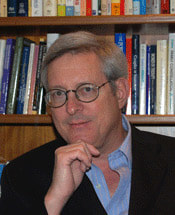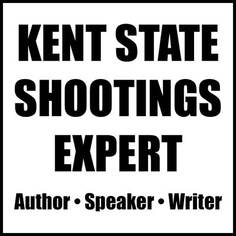|
When Bob Woodward speaks at Kent State on May 4, someone should ask him about an article he and Carl Bernstein he wrote for the Washington Post way back in 1973 (May 17, to be precise). Quoting their infamous source, "Deep Throat," the reporters wrote that the Nixon administration used an array of dirty tricks against protestors of the war in Vietnam, including the use of paid provocateurs to encourage violence at antiwar demonstrations early in the first Nixon administration."
If Woodward can provide evidence supporting this claim (Bernstein could not remember the report when I chauffeured him to a speech in L.A. years ago), the question has to be asked: was one of those paid provocateurs a part-time Kent State student named Terry Norman? On May 4, 1970, Norman took photographs of protestors for both the campus police and FBI. He has always been a compelling and mysterious figure in the debate over what caused the Ohio National Guardsmen to kill four Kent State students. At one point, the late Indiana Senator Birch Bayh even accused him of being the tragedy's "fatal catalyst." Stuart Allen, one of the two audio experts who examined the only continuous recording of the shootings, was convinced that Norman was involved in a scuffle with his fellow students and that he whipped out his concealed .38 caliber pistol and fired four bullets 70 seconds before the main volley. Several witnesses indirectly support this claim; while others, including Norman, insist he never fired at all. But even if Allen was right, and Norman fired before any Guardsmen did, it seems highly improbable that the National Guard would have twiddled their rifles for 70 seconds before responding. A minute and ten seconds is a very long time to react to gunfire. Still, there are other reasons to wonder about how Terry Norman fits into the larger puzzle. A photograph surfaced during discovery before the 1975 wrongful death and injury trial revealed that Norman was on what was then the university's practice football field (where a gym annex now stands), and that he was literally surrounded by a semi-circle of soldiers. This photograph was taken approximately five to ten minutes before the Guard retreated up a hill and opened fire. There has never been an explanation as to why Norman, among the thousands of students present that day, waltzed up to the soldiers or whether his presence was even welcome. We do know, though, that shortly after this encounter, Norman positioned himself in between the students and the Guardsmen and threw rocks at the students. Guard captain John Martin witnessed this and asked himself, 'What is that idiot doing?" Norman himself admitted in his pretrial deposition that he threw two or three rocks. And a third witness, Tom Masterson, who admitted that he was the person who jumped Norman (supposedly to take out his frustration over the killings), insisted that the number of rocks Norman threw was closer to "half a dozen, a dozen." Why? Was Norman trying to provoke an incident between the students and the Guardsmen, and if so, was he acting on his own or at the behest of the FBI? Could he have been one of the out-of-control informants that FBI Director J. Edgar Hoover warned his agents about? All we know for certain is that Norman supplied the police and the FBI with photographs of antiwar demonstrators because he liked to see them go to jail. And after the shootings, Kent State Detective Tom Kelley wrote Norman a letter of recommendation that helped him secure a job with the Washington, D. C. police department, where he later became a member of its S.W.A.T. unit. Terry Norman's role on May 4, 1970, is of course, only one of the many unresolved mysteries of the killings at the university. So is the question of whether or not the Guardsmen took the law into their own hands and either agreed among themselves to shoot the students, or were ordered to do so by a commanding officer. Six of the eight authors of major May 4 studies, including myself, concluded the shootings were no accident: that they were a deliberate response to the mostly verbal abuse they received from the students. By inviting luminaries like Woodward to speak on the anniversaries--or by doing what the university did on the 20th anniversary: inviting thousands of poets to participate in festivities--the university, of course, guarantees that the tragedy itself will be overshadowed and that the university will get some positive publicity. Kent State says it is trying to "bring high-profile, world-renowned experts to Kent State for serious, thought-provoking discussions and conversations.'' If only the university were as welcoming to the Bob Woodwards in Ohio who sought what Woodward and Bernstein called "the best obtainable version of the truth."
0 Comments
Leave a Reply. |
AuthorThis blog is written by William A. Gordon, a Kent State alumnus and the author of "Four Dead in Ohio" and three other books. It offers commentary on the still unfolding developments in the Kent State shooting case. Archives
March 2020
Categories
All
|
|
Kent State Shooting Expert
William A. Gordon Email: BGordonLA@aol.com Website: www.KentStateShootingsExpert.com |

 RSS Feed
RSS Feed
